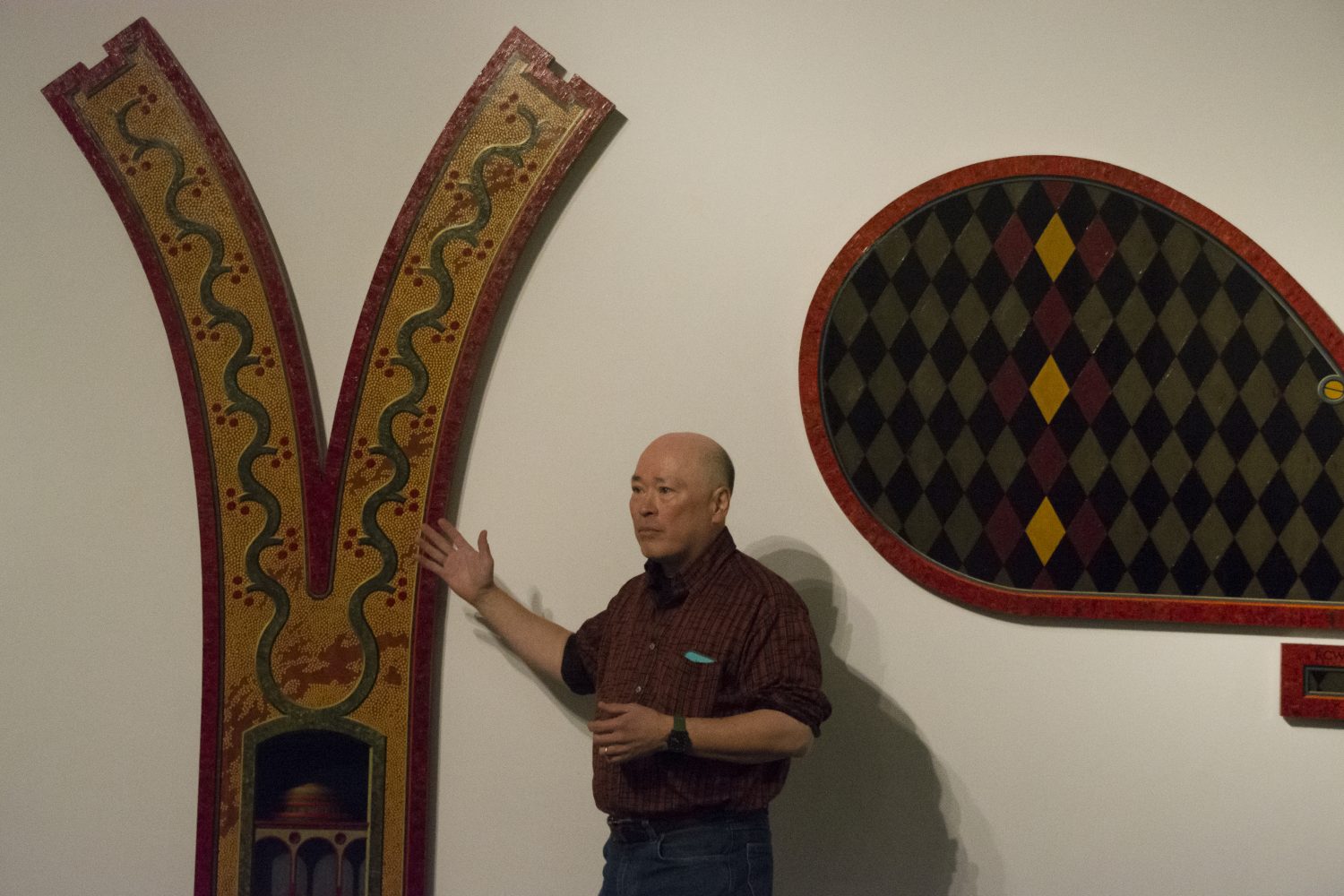The University of Rhode Island’s Fine Arts building hosts the exhibit “Transitions Considered” by URI professor Richard Whitten, in the main gallery.
The exhibit showcases three themes including architectural spaces, invented machinery and games with in the art work. The exhibit opened Wednesday Nov. 15. Whitten was there and gave a brief lecture about his work.
Afterwards the Cigar had the chance sit down with Whit- ten to ask him some questions about his exhibit.
Q: What were some of the main inspirations for your pieces?
A: “I was thinking, ok, if all the shapes are moving than nothing’s moving. Because there’s nothing to use as a reference, and I always looked at renaissance paintings as com positional guides. And so I started to use an interior space that eventually looked like a church barrel vault and the shapers were in it.”
“I struggled a long time about what to do about the shape of the piece because it was just a rectangle, it’s just a picture of the building. So, eventually I came up with the idea of shaping the piece and orchestrating your way into the space.”
“Back in high school I was interested in Jungian psychology, so I took the opportunity when I was in grad school to be analyzed by a Jungian. So there was a whole lot of dream analysis and I kept dream logs and a lot of these architectural spaces are from dreams.”
Q: How has creating these paintings allowed you to relive, or continue, your childhood as an adult?
A: “Well what adult gets to play, right? I don’t know if it’s true, because I find most adults are pretty childish. But what the theory of what adults are is, they’re serious. A child’s view of an adult is serious and not fun loving, may not be true. For me I’m able to make a living out of my fascinations. Like how many people get to do that? Like you really become interested in in toys, or in balls, or in elevation, and how do you make a living out of that? And this is it.”
Q: How much time, labor and effort does it take to make a specific piece?
A: ”The ideas gell over years… In the notebook I think for at least three years I had been working with top- like shapes that could spin but had wings. And it never turned into a painting… it wasn’t until I had the idea of constructing something with the governor that it gelled. And that probably took four years and at that point it probably took about a month and a half, because I was working on other stuff. To come up with a good enough drawing to say ok, now I can draft [the prototype] that took a month and a half. Making that panel, that panel, because its kinda complex took about 14 to 15 hours. [The final piece] took almost a week.”
The exhibit will be running into the first few weeks of December and Whitten will be returning Dec. 5 to give another lecture on his showing.




